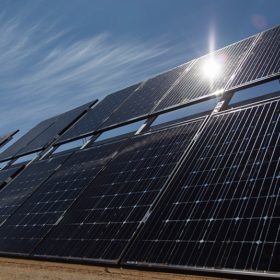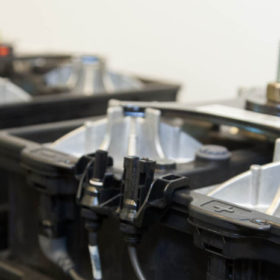Local content requirement costs for large-scale PV in India
A UK-German research team analyzed solar auctions in India between 2014 and 2017 and has determined that local content requirements have driven up PV costs by an average of 6% per kilowatt-hour.
India could add 6,490 electric buses in next two years
The country’s electric bus market has gained momentum owing to aggressive government push through FAME India [Faster Adoption and Manufacturing of (Hybrid &) Electric Vehicles in India] scheme and increased interest from global investors.
UK’s Power Roll trials low-cost, flexible solar-and-storage system in Himalayan villages
The system will use an innovative solar film developed by Power Roll that can be manufactured for just $0.03/Watt and deployed on a wide range of non-load bearing buildings, including agricultural and warehouse roofs.
Petroleum minister: Half state fuel stations will be solar-powered in five years
Petroleum and natural gas minister Dharmendra Pradhan said India had received proposals for more than 10 GW of solar equipment manufacturing capacity under the Atma Nirbhar Bharat Abhiyaan mission announced by Narendra Modi.
CSIR-CMERI Durgapur, NISE sign pact on solar research and capacity building
The CSIR-Central Mechanical Engineering Research Institute (CMERI), Durgapur, which has expertise in the design and development of solar artifacts for multifaceted uses, and the National Institute of Solar Energy (NISE), Gurugram, will conduct joint field studies for different solar technologies and work towards skill and capacity building.
Machine-learning for PV module cleaning
French researchers have developed a machine-learning model to clean low-power PV projects and standalone solar arrays in rural areas isolated from the grid.
India’s solar future: Domestic first, international second
The International Solar Alliance signals India’s hope to be a global competitor in emerging technologies and cement its place as an institution builder. But how does India’s vision translate into domestic policy? Has India led by example?
Waaree lands 300+ MW solar module supply deal
The deal follows 50 MW of orders completed recently for another American developer. Encouraged by the demand, Waaree plans to strengthen its base in the USA by opening a local office in California shortly.
C-MET seeks co-funding partner for lithium and sodium-ion battery cell manufacturing
The selected party will provide funding support of Rs 4 crore by way of design and development of machinery for lithium- and sodium-ion battery cell manufacturing. September 30 is the deadline to submit the interest.
BHEL seeks hybrid solar inverters for Nigerian project
September 10 is the last date to submit bids for supply, installation, and commissioning of hybrid solar inverter-cum-charge controllers of ratings 5 kVA (193 quantities), 10 kVA (32), and 15 kVA (5). All the inverters are to be delivered by November 12.















